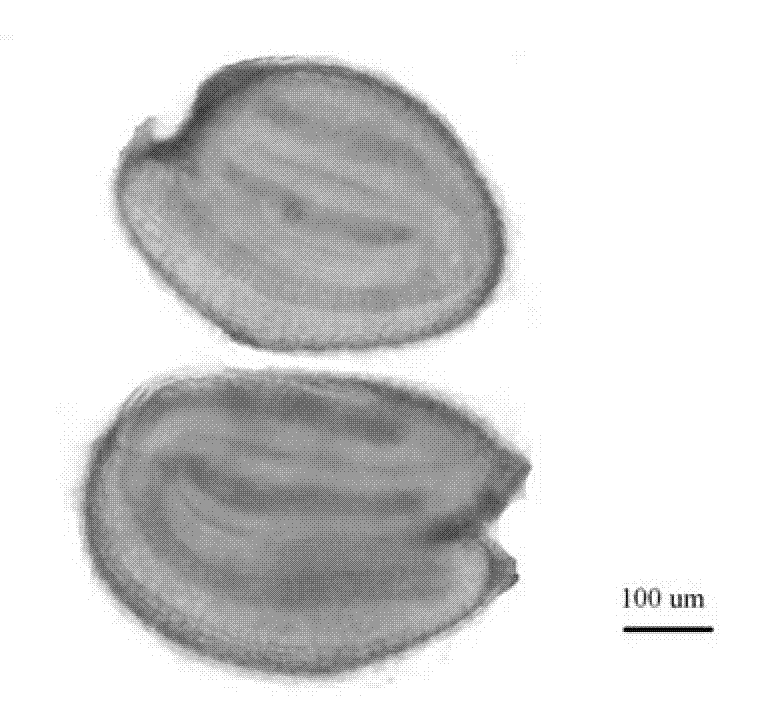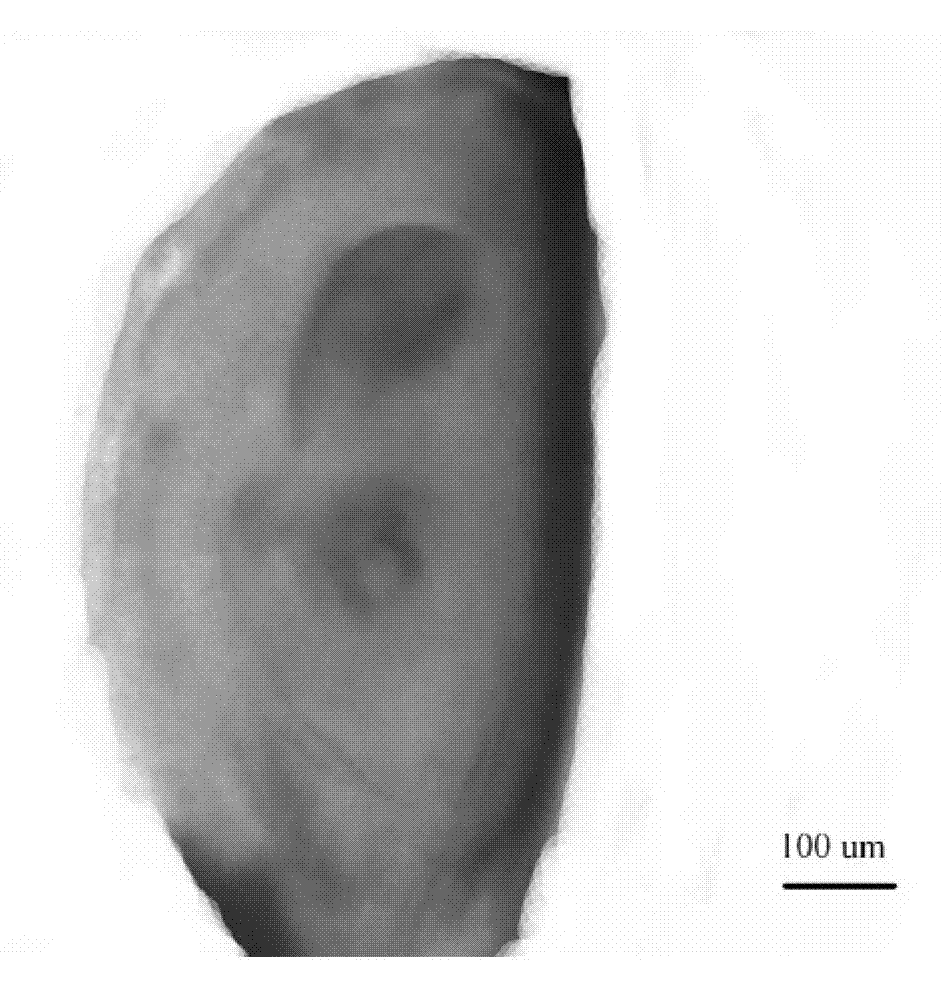Method for staining iron element in plants
A dyeing method and iron element technology, which is applied in the field of plant biology, can solve the problems of time-consuming and laborious, and achieve the effect of simple operation and short cycle
- Summary
- Abstract
- Description
- Claims
- Application Information
AI Technical Summary
Problems solved by technology
Method used
Image
Examples
Embodiment 1
[0029] Example 1: Iron staining and microscope observation in Arabidopsis seeds
[0030] (1) In order to facilitate the penetration of Perls staining solution, cut off part of the Arabidopsis seed coat with a sharp blade.
[0031] (2) Soak the seeds treated in step (1) in freshly prepared Perls staining solution, and stain for 30 minutes;
[0032] Preparation of Perls staining solution: 4% potassium ferrocyanide and 4% hydrochloric acid are mixed in equal amounts, matured for 15 minutes and set aside;
[0033] (3) Rinse with deionized water for 3 times;
[0034] (4) Put the rinsed seeds in the chloral hydrate test solution, and make them transparent for more than 8 hours, or overnight, until the seeds are completely transparent;
[0035] Preparation of chloral hydrate test solution: 50g of chloral hydrate, 15ml of water and 10ml of glycerin, dissolved to obtain;
[0036] (5) Take an appropriate amount of chloral hydrate test solution transparent agent and drop the seeds tre...
Embodiment 2
[0038] Embodiment 2: iron staining and microscope observation in rice embryo
[0039] (1) Dissect the embryo from the rice seed with a sharp blade and a dissecting needle
[0040] (2) Immerse the dissected embryos in freshly prepared Perls staining solution and stain for 30 minutes;
[0041] Preparation of Perls staining solution: 4% potassium ferrocyanide and 4% hydrochloric acid are mixed in equal amounts, matured for 15 minutes and set aside;
[0042] (3) Rinse with deionized water for 3 times;
[0043] (4) Place the rinsed embryos in the chloral hydrate test solution, and make them transparent for more than 8 hours, or overnight, until the embryos are completely transparent;
[0044] Preparation of chloral hydrate test solution: 50g of chloral hydrate, 15ml of water and 10ml of glycerin, dissolved to obtain;
[0045] (5) Place the embryos treated in step (4) on a glass slide, cut the embryos into 2 with a sharp blade, cover with a cover glass, and press slightly. The f...
Embodiment 3
[0046] Embodiment 3: comparative test
[0047] A number of mature seeds of Arabidopsis thaliana were selected and randomly divided into two parts. One part was dyed by the method for iron element dyeing in plants of the present invention. See Example 1 for specific steps.
[0048] One section was stained with Perls-DAB, the specific steps are as follows: (1) Put the Arabidopsis seeds in 10% neutral formalin (0.01M PBS, PH=7.4) to fix for more than 10h, rinse with 0.01MPBS 3 times, 30 minutes each time; (2) Serial alcohol dehydration, 1-2 hours per level; (3) TO transparent agent transparent 3 times, 2 hours each time; (4) Permeable wax, broken wax and TO transparent agent 1:1 , Overnight at 40 degrees, 60 degrees, change pure wax twice, 4 hours each time; (5) Embed in paraffin, slice with American AO microtome, thickness 6-8um, bake slices at 40 degrees overnight; (6) Dewax and rehydrate : TO clearing agent 2 times, TO clearing agent and absolute ethanol 1:1, 5 minutes each t...
PUM
 Login to View More
Login to View More Abstract
Description
Claims
Application Information
 Login to View More
Login to View More - R&D
- Intellectual Property
- Life Sciences
- Materials
- Tech Scout
- Unparalleled Data Quality
- Higher Quality Content
- 60% Fewer Hallucinations
Browse by: Latest US Patents, China's latest patents, Technical Efficacy Thesaurus, Application Domain, Technology Topic, Popular Technical Reports.
© 2025 PatSnap. All rights reserved.Legal|Privacy policy|Modern Slavery Act Transparency Statement|Sitemap|About US| Contact US: help@patsnap.com



